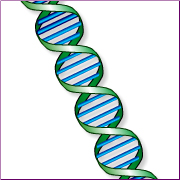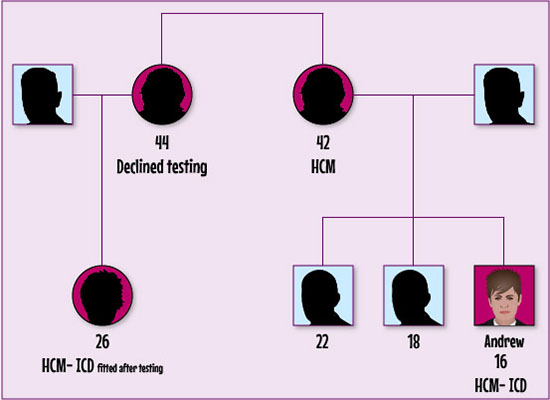
Following his referral to the cardiac genetic service, Andrew is offered a clinic appointment to discuss whether he would like to have genetic testing for the mutation that causes HCM. He and his parents decide that they would like to go ahead with this. Andrew is found to have the gene mutation and the family take the decision to offer other family members the opportunity to also be genetically tested.
In Andrew’s case, cascade screening of first degree relatives:
- identifies inheritance from the maternal side, therefore, maternal relatives are offered screening
- identifies asymptomatic gene carriers. These are individuals who are genotype positive (so have inherited the HCM gene) but phenotype negative (do not display the physical characteristics of the disease).
- allows risk stratification for SCD to be undertaken and appropriate management offered to those of Andrew’s relative deemed to be at risk. (Please see 2014 ESC Guidelines on diagnosis and management of hypertrophic cardiomyopathy: web addenda [PDF] and Ventricular Arrhythmias and the Prevention of Sudden Cardiac Death: ESC Clinical Practice Guidelines 2015)

Pulse point
You will already have read some information around cascade screening in the background section of the module.
Cascade screening:
- Involves targeting close relatives of newly diagnosed patients with inherited cardiac disease, or of a SCD victim, for cardiac and genetic assessment.
- Produces a greater rate of case identification than general population screening.
- Once a diagnosis is confirmed in an individual, testing is extended to first degree and second degree relatives.
- If relatives test positive, their first and second degree relatives are approached and offered testing, and so on.


